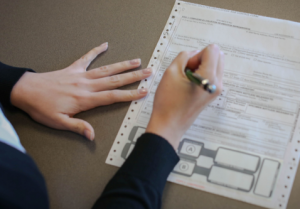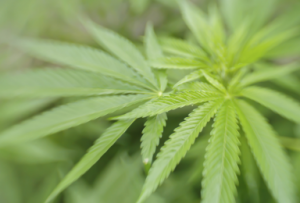The novel
coronavirus, SARS-CoV-2 (COVID-19), has deeply affected communities globally. In
just four months, the pandemic suffered more than 12.5 million confirmed cases
and more than 500,000 deaths worldwide, according to the World
Health Organization.
With the number
of coronavirus cases on the rise, travel restrictions, and fluctuating
government measures, populations around the world have experienced a myriad of
social and economic changes. An important question in this time of uncertainty:
how has the global illegal drug market been affected?
New research from
the United Nations Office on Drugs and Crime
(UNODC) examines
drug production and raw materials,
drug trafficking amongst border restrictions, and individual drug consumption
while quarantined.
Drug production and raw materials
The
international drug trade begins with production. With varying regional COVID-19-related
restrictions being implemented by governments worldwide, drug production is also
being impacted. The majority of heroin and cocaine production are isolated to a
few areas of the world, making the analysis of how production is behaving
easier to understand, whereas marijuana and synthetic drugs can be grown or
cooked virtually anywhere2.
According to a
2019 report from the United Nations Office on Drugs and Crime, marijuana has the highest drug use in
the world. Marijuana production is often local and has a short supply chain. To
date, the effect of COVID-19 on cannabis production has not been substantial
enough to report any changes.
The overall effects
on drug production due to the COVID-19 pandemic are mostly seen in areas with
extensive production that require more workers and higher business costs2.
Drug trafficking and personal consumption during quarantine
Drug
distribution is affected globally by the COVID-19 pandemic because it consists
of sea, land, and air transportation. Modes of distribution depend mainly on
what will provide maximum profit and with the minimal risk of
interception.
According to
the UNODC, opiates and heroin stemming from Iran have had an
increased amount of heroin seizures this year due to COVID-19 border
restrictions, leading traffickers to move from land to sea transportation. Most
heroin trafficked to the United States comes from Mexico, which has been
reduced due to the pandemic, and is believed to have resulted in stockpiling of
the drug along the border until restrictions are lifted. Similarly, cocaine
from Columbia has been reduced due to border restrictions and has led to drug
shortages and a spike in maritime drug trafficking.
There is an
increase in cannabis demand, due to lockdown measures which results in increased
trafficking in less strict trafficking routes, specifically North Africa to
Europe. Marijuana has a shorter supply chain, so overall there is an increased
demand but not a drastic change in distribution2.
What does this mean for employers?
There are initial
and future effects from COVID-19 on drug availability and drug use. Decrease in
drug availability has caused drug users to stockpile substances. In the future,
expect an increase in drug use. Increases of stockpiled drugs and a surge on illicit
drugs after bans are lifted could result in large quantities of low-cost drugs
being available and an increased risk of overdoses, according to the UNODC.
While the international
drug market and drug abuse are in flux, it is important for employers to
continue to prioritize employee health and safety. Many employers are reevaluating
how their business operates by implementing and refining their workforce drug
testing programs.
For more
information about drug testing, contact us online or visit our website.
Sources:
- WHO Coronavirus Disease (COVID-19) Dashboard. World Health Organization website. Accessed July 13, 2020 https://covid19.who.int/
- COVID-19 and the drug supply chain: from production and trafficking to use. United Nations Office on Drugs and Crime. Accessed June 11, 2020 https://www.unodc.org/documents/data-and-analysis/covid/Covid-19-and-drug-supply-chain-Mai2020.pdf
- World Drug Report 2020, Booklet 1. United Nations Office on Drugs and Crime. Accessed June 11, 2020 https://wdr.unodc.org/wdr2020/field/WDR20_BOOKLET_1.pdf
 Your Privacy Choices
|
Privacy Notices
|
Terms
|
Language Assistance / Non-Discrimination Notice | Asistencia de Idiomas / Aviso de no Discriminación | 語言協助 / 不䈚視通知
Your Privacy Choices
|
Privacy Notices
|
Terms
|
Language Assistance / Non-Discrimination Notice | Asistencia de Idiomas / Aviso de no Discriminación | 語言協助 / 不䈚視通知



















The novel coronavirus, SARS-CoV-2 (COVID-19), has deeply affected communities globally. In just four months, the pandemic suffered more than 12.5 million confirmed cases and more than 500,000 deaths worldwide, according to the World Health Organization.
With the number of coronavirus cases on the rise, travel restrictions, and fluctuating government measures, populations around the world have experienced a myriad of social and economic changes. An important question in this time of uncertainty: how has the global illegal drug market been affected?
New research from the United Nations Office on Drugs and Crime (UNODC) examines drug production and raw materials, drug trafficking amongst border restrictions, and individual drug consumption while quarantined.
Drug production and raw materials
The international drug trade begins with production. With varying regional COVID-19-related restrictions being implemented by governments worldwide, drug production is also being impacted. The majority of heroin and cocaine production are isolated to a few areas of the world, making the analysis of how production is behaving easier to understand, whereas marijuana and synthetic drugs can be grown or cooked virtually anywhere2.
According to a 2019 report from the United Nations Office on Drugs and Crime, marijuana has the highest drug use in the world. Marijuana production is often local and has a short supply chain. To date, the effect of COVID-19 on cannabis production has not been substantial enough to report any changes.
The overall effects on drug production due to the COVID-19 pandemic are mostly seen in areas with extensive production that require more workers and higher business costs2.
Drug trafficking and personal consumption during quarantine
Drug distribution is affected globally by the COVID-19 pandemic because it consists of sea, land, and air transportation. Modes of distribution depend mainly on what will provide maximum profit and with the minimal risk of interception.
According to the UNODC, opiates and heroin stemming from Iran have had an increased amount of heroin seizures this year due to COVID-19 border restrictions, leading traffickers to move from land to sea transportation. Most heroin trafficked to the United States comes from Mexico, which has been reduced due to the pandemic, and is believed to have resulted in stockpiling of the drug along the border until restrictions are lifted. Similarly, cocaine from Columbia has been reduced due to border restrictions and has led to drug shortages and a spike in maritime drug trafficking.
There is an increase in cannabis demand, due to lockdown measures which results in increased trafficking in less strict trafficking routes, specifically North Africa to Europe. Marijuana has a shorter supply chain, so overall there is an increased demand but not a drastic change in distribution2.
What does this mean for employers?
There are initial and future effects from COVID-19 on drug availability and drug use. Decrease in drug availability has caused drug users to stockpile substances. In the future, expect an increase in drug use. Increases of stockpiled drugs and a surge on illicit drugs after bans are lifted could result in large quantities of low-cost drugs being available and an increased risk of overdoses, according to the UNODC.
While the international drug market and drug abuse are in flux, it is important for employers to continue to prioritize employee health and safety. Many employers are reevaluating how their business operates by implementing and refining their workforce drug testing programs.
For more information about drug testing, contact us online or visit our website.
Sources: